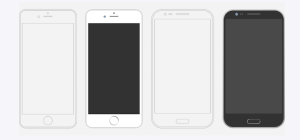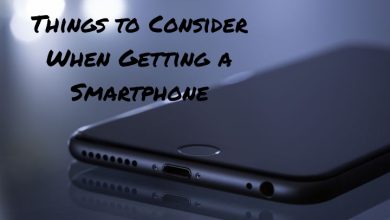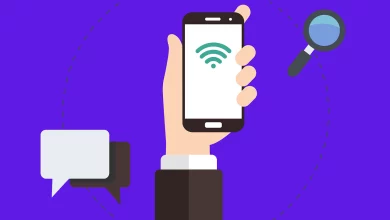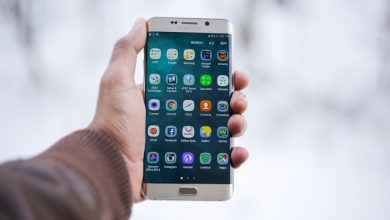Difference Between IOS and Android OS
What exactly is IOS?
The iOS operating system is used by Apple’s iPhone, iPad, and iPod touch devices. It was first released in 2007 and has since become one of the world’s most popular mobile operating systems.
One of the most important features of iOS is its user-friendly interface, which allows users to easily navigate and interact with their devices. It also comes with a number of built-in apps, such as Maps, Safari, Music, and Photos, which provide users with essential functionality for their daily needs.
In addition to these features, iOS supports a large number of third-party apps, which are available for download from the App Store. The App Store is a central repository of iOS apps that allows users to download and install new software on their devices in a convenient and secure manner.
Another important feature of iOS is its robust security. Apple has pledged to protect user privacy and has put in place a variety of security measures to keep user data safe. For example, iOS protects sensitive data stored on the device with encryption and requires users to set a passcode or use Touch ID to unlock their devices.
Finally, iOS is updated on a regular basis with new features and improvements to improve the user experience. These updates are typically delivered via over-the-air updates, which are quick and simple to install and ensure that the operating system runs smoothly and efficiently.
To summarize, iOS is a versatile, user-friendly, and secure operating system that has become an essential component of the mobile landscape. Whether you want a simple way to manage your daily life or a powerful platform for developing and running innovative apps, iOS has something for everyone.
What exactly is Android OS?
Google’s Android is a mobile operating system. Millions of devices worldwide use it, ranging from smartphones and tablets to televisions and in-car entertainment systems. The Android operating system is based on the Linux kernel and is primarily intended for touchscreen mobile devices.
Customizability is one of Android’s defining features. Users can personalize their device’s home screen, app icons, and settings, and the Google Play Store provides a diverse selection of apps for users to download and install on their devices. Third-party app stores, such as the Amazon Appstore, also provide a wide range of apps for Android devices.
Google’s mobile services, such as Gmail, Google Maps, Google Drive, and the Google Assistant, are also included in the Android OS. These services enable users to easily sync their data and settings across multiple devices while also providing access to a wide range of productivity and entertainment apps.
Another distinguishing feature of Android is its open-source nature. This gives developers the freedom to freely modify and distribute the operating system, resulting in the creation of custom ROMs and modified versions of Android that can be installed on devices.
Google has been focusing on making Android more secure and user-friendly in recent years. This has included the release of Android updates designed to patch security flaws, as well as new features such as Google Play Protect, which scans apps for malware before installing them on a device.
Overall, Android is a versatile and widely used mobile operating system that allows users to customize their devices and access a wide range of apps and services. Its open-source nature has also allowed it to evolve and improve over time, making it appealing to both users and developers.
Difference between Android OS and iOS
Android OS and iOS are two of the most popular mobile operating systems. Both have distinct characteristics, but there are significant differences between the two.
The level of customization available to users is one of the most significant differences between Android and iOS. Because Android is an open-source operating system, users can more easily modify and customize the look and feel of their device. In contrast, iOS is a closed system that restricts the level of customization that users can perform.
Another significant distinction is the number of devices supported by each operating system. Android is used by a wide range of manufacturers, including Samsung, LG, and Google, and is available on a much broader range of devices, such as smartphones, tablets, and smartwatches. Apple, on the other hand, only uses iOS, which is available on the iPhone, iPad, and iPod Touch.
Android and iOS app stores are also distinct. For Android devices, the Google Play Store is the primary app store, whereas the Apple App Store is the primary source of apps for iOS devices. While both app stores have a diverse selection of apps, the Apple App Store is widely regarded as having a higher standard for app quality, with a more stringent review process.
Another significant difference between Android and iOS is the cost of ownership and device pricing. Android devices are generally more affordable than iOS devices, with a wider range of prices available for various types of devices. The cost of ownership for iOS devices, on the other hand, is frequently lower because they receive regular software updates for a longer period of time and are less likely to experience performance issues.
Both Android and iOS have implemented security measures to protect user data and privacy. However, iOS is widely regarded as more secure due to its closed system and more stringent app review process, whereas Android is more vulnerable to malware and security risks due to its open-source nature.
To summarize, both Android OS and iOS have distinct features and advantages. Personal preferences and needs, such as the level of customization, the range of devices available, app store options, pricing, and security concerns, ultimately determine the choice between the two.








